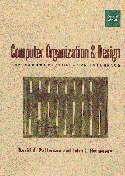/* double_rep.c: hex for doubles */
#include <stdio.h>
#include <ctype.h>
void print_bits(unsigned int r) {
int i;
for (i = 0; i < 32; i++) {
printf("%1i", ( (r >> 31) ? 1 : 0));
r = r << 1;
}
}
int main() {
union {
double d;
struct {
unsigned int p;
unsigned int q;
} b;
} r;
char ch;
for( ; ; ) {
while (isspace(ch = getchar()))
;
if (ch == 'x')
scanf("%x %x", &r.b.p, &r.b.q);
else if (ch == 'f')
scanf("%lf", &r.d);
else break;
printf(" Dec: %20.16e\n", r.d);
printf(" Hex: %08x %08x\n",
r.b.p, r.b.q);
printf(" Bin: ");
print_bits(r.b.p); printf("\n ");
print_bits(r.b.q); printf("\n");
}
}
|
// DoubleRep.java: bin and hex
public class DoubleRep {
// main function to try out Base class
public static void main (String[] args) {
GetData getData = new GetData();
double d;
long drep;
while (true) {
d = getData.getNextDouble();
if (d == 0.0) break;
drep = Double.doubleToLongBits(d);
String s = Long.toBinaryString(drep);
while (s.length() < 64) s = "0" + s;
String t = Long.toHexString(drep);
while (t.length() < 16) t = "0" + t;
System.out.print(" Bin: ");
for (int i = 0; i < 64; i++) {
if (i == 31)
System.out.print("\n ");
System.out.print(s.charAt(i));
}
System.out.println();
System.out.println(" Hex: " + t);
}
} // end of main
}
|
% cc -o double_rep double_rep.c
% double_rep
f -0.75
Dec: -7.5000000000000000e-01
Hex: bfe80000 00000000
Bin: 10111111111010000000000000000000
00000000000000000000000000000000
f 16.0
Dec: 1.6000000000000000e+01
Hex: 40300000 00000000
Bin: 01000000001100000000000000000000
00000000000000000000000000000000
f 1.5
Dec: 1.5000000000000000e+00
Hex: 3ff80000 00000000
Bin: 00111111111110000000000000000000
00000000000000000000000000000000
x 3fe80000 00000000
Dec: 7.5000000000000000e-01
Hex: 3fe80000 00000000
Bin: 00111111111010000000000000000000
00000000000000000000000000000000
q
%
|
% javac GetData.java
% javac DoubleRep.java
% java DoubleRep
-.75
Bin: 10111111111010000000000000000000
00000000000000000000000000000000
Hex: bfe8000000000000
16.0
Bin: 01000000001100000000000000000000
00000000000000000000000000000000
Hex: 4030000000000000
.75
Bin: 00111111111010000000000000000000
00000000000000000000000000000000
Hex: 3fe8000000000000
1.5
Bin: 00111111111110000000000000000000
00000000000000000000000000000000
Hex: 3ff8000000000000
15.0
Bin: 01000000001011100000000000000000
00000000000000000000000000000000
Hex: 402e000000000000
0
%
|
